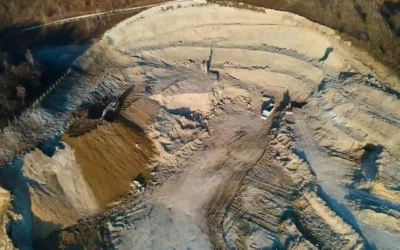Silica sand, one of the most abundant materials on Earth, is found in various forms around the world. This versatile material has become indispensable in numerous industries and applications, from glass manufacturing to construction. In this article, we will explore the various uses of silica sand and how this sustainable material has revolutionized the modern world.
The multiple applications of silica sand
Glass manufacturing
Silica sand is a main ingredient in glass manufacturing, providing the silica content necessary to create the desired transparency and durability. It is used in the production of various types of glass, including windows, bottles and glassware. The high melting point of silica sand ensures that the glass produced is strong and resistant to temperature fluctuations.
Construction
In construction, silica sand is used as a key component in the manufacture of cement and mortar. Its angular shape and size make it an ideal aggregate for mixing with cement, resulting in a strong and durable concrete. Silica sand also plays a vital role in the production of bricks and blocks, acting as a binding agent and providing strength to the structure.
Foundry
Silica sand is widely used in casting processes to create molds for metal parts. Its refractory nature and permeability make it an ideal material for casting, ensuring accurate reproduction of intricate designs and maintaining structural integrity during the cooling process.
Oil and gas recovery
In the oil and gas industry, silica sand is used as a proppant in hydraulic fracturing (fracking) to facilitate the extraction of hydrocarbons from deep within the earth. The high compressive strength of the sand keeps fractures open, allowing oil and gas to flow to the surface.
Sustainable practices in the silica sand industry
As demand for silica sand continues to grow, the industry has adapted to sustainable practices to minimize its environmental impact. Some of these practices include:
Efficient use of water
Water is a crucial resource in the silica sand industry for processes such as washing and wet classification. To conserve water, many companies have implemented water recycling systems that allow water to be reused, reducing overall consumption and protecting local water sources.
Land reclamation
Companies involved in silica sand mining are increasingly adopting land reclamation practices, which consist of restoring mined areas to their original state or transforming them into a productive ecosystem. This helps minimize the environmental impact of mining and promotes biodiversity in the area.
Dust control
Dust generated during silica sand mining and processing can contribute to air pollution. To mitigate this, companies employ dust control measures, such as covering sand piles, using water sprinklers during processing and maintaining vegetative barriers around extraction sites. Silica sand is a fundamental material in many industries, demonstrating its versatility and necessity in modern society. As demand for this abundant resource continues to grow, the silica sand industry has adapted to sustainable practices to ensure minimal environmental impact. Harnessing the benefits of this incredible material while prioritizing sustainability has the potential to contribute to a greener and more prosperous future.






